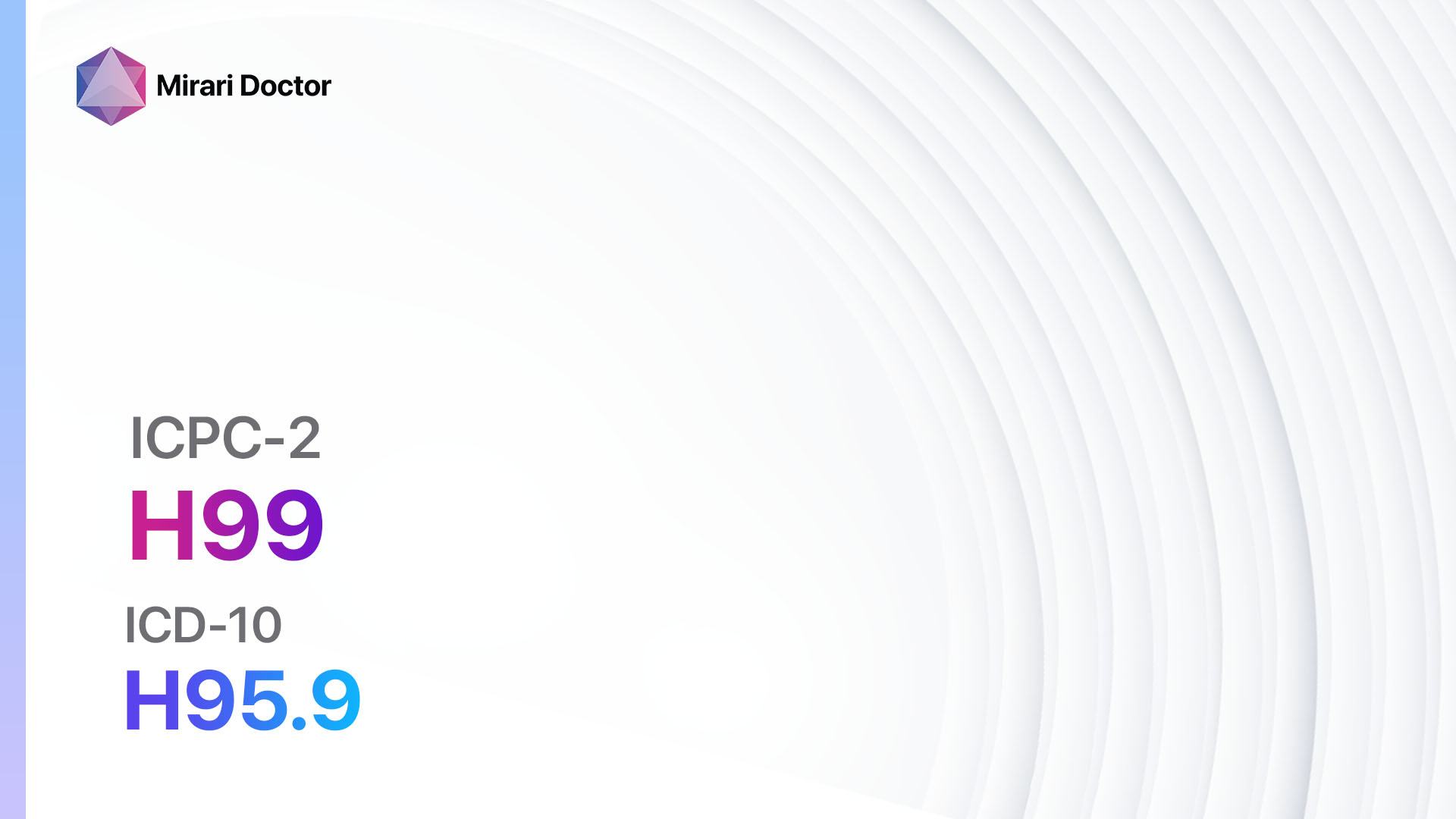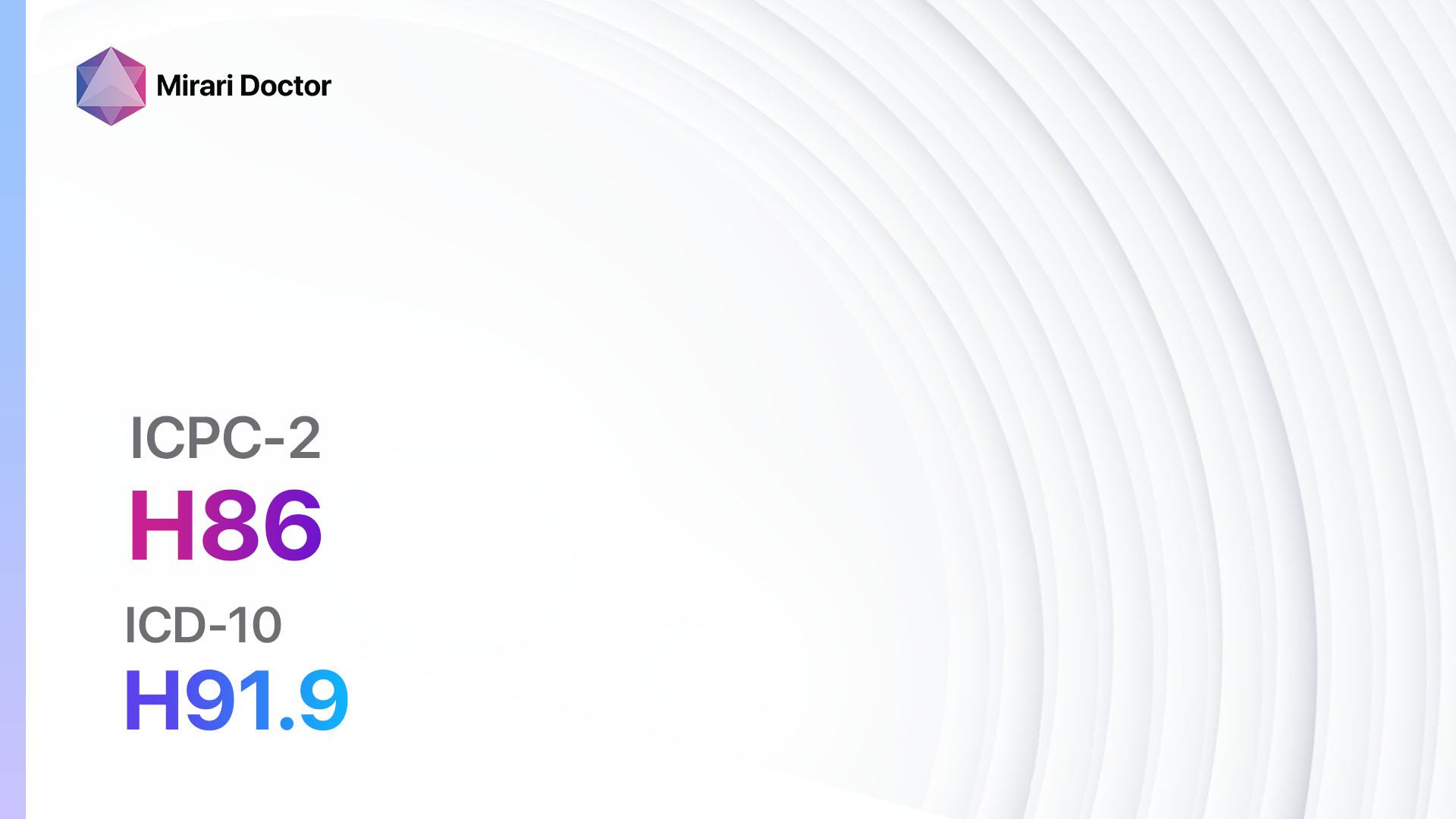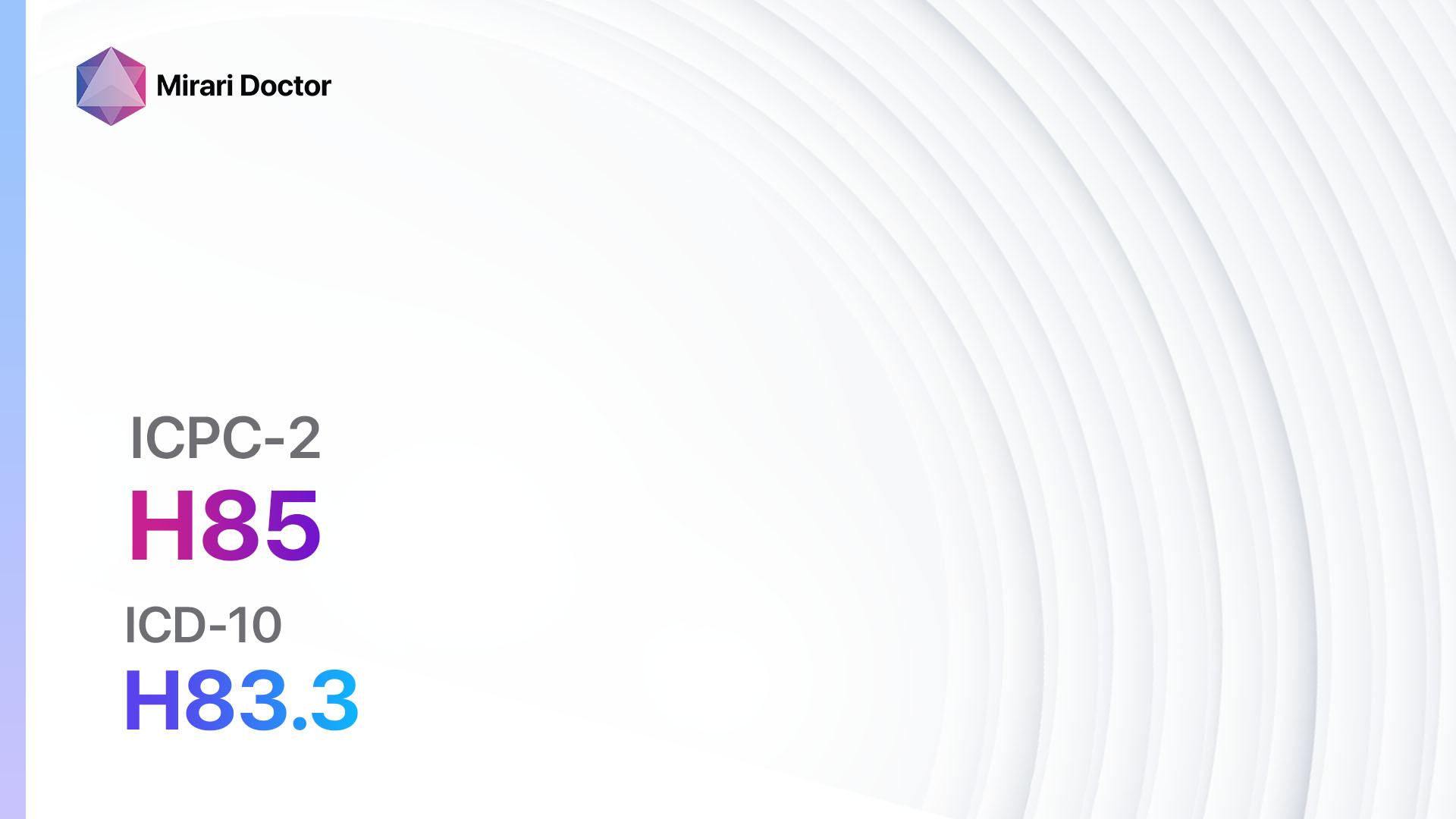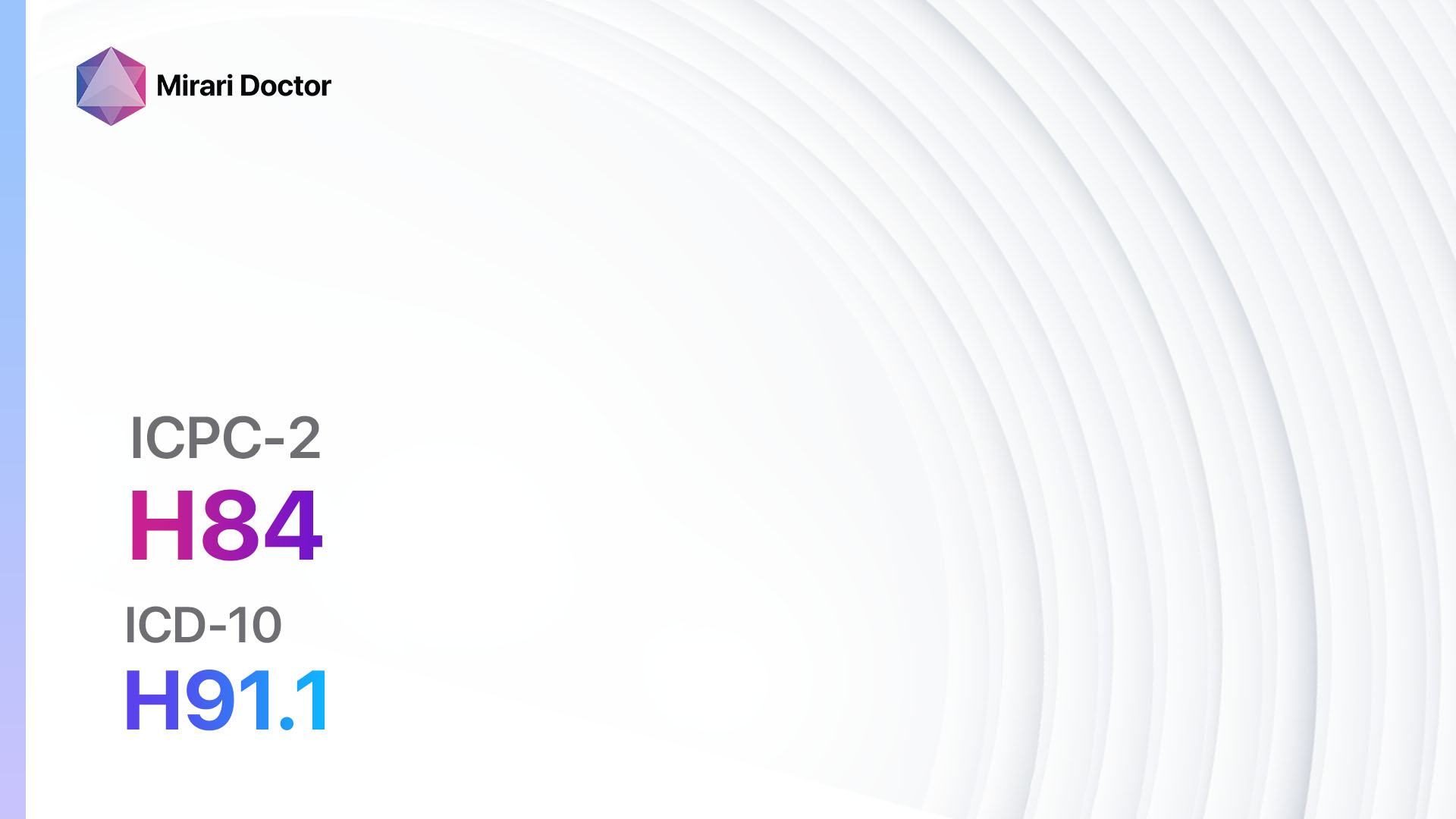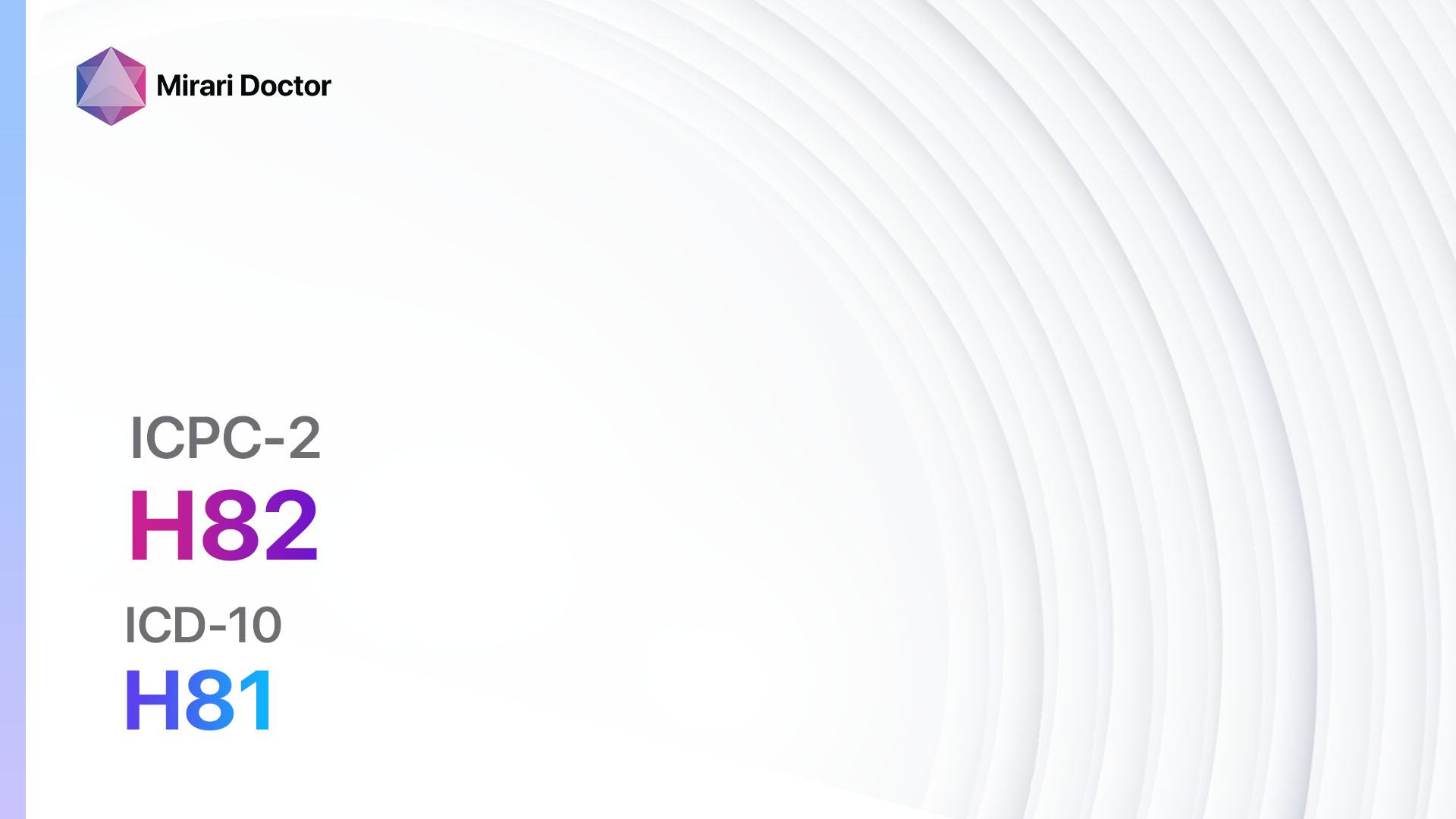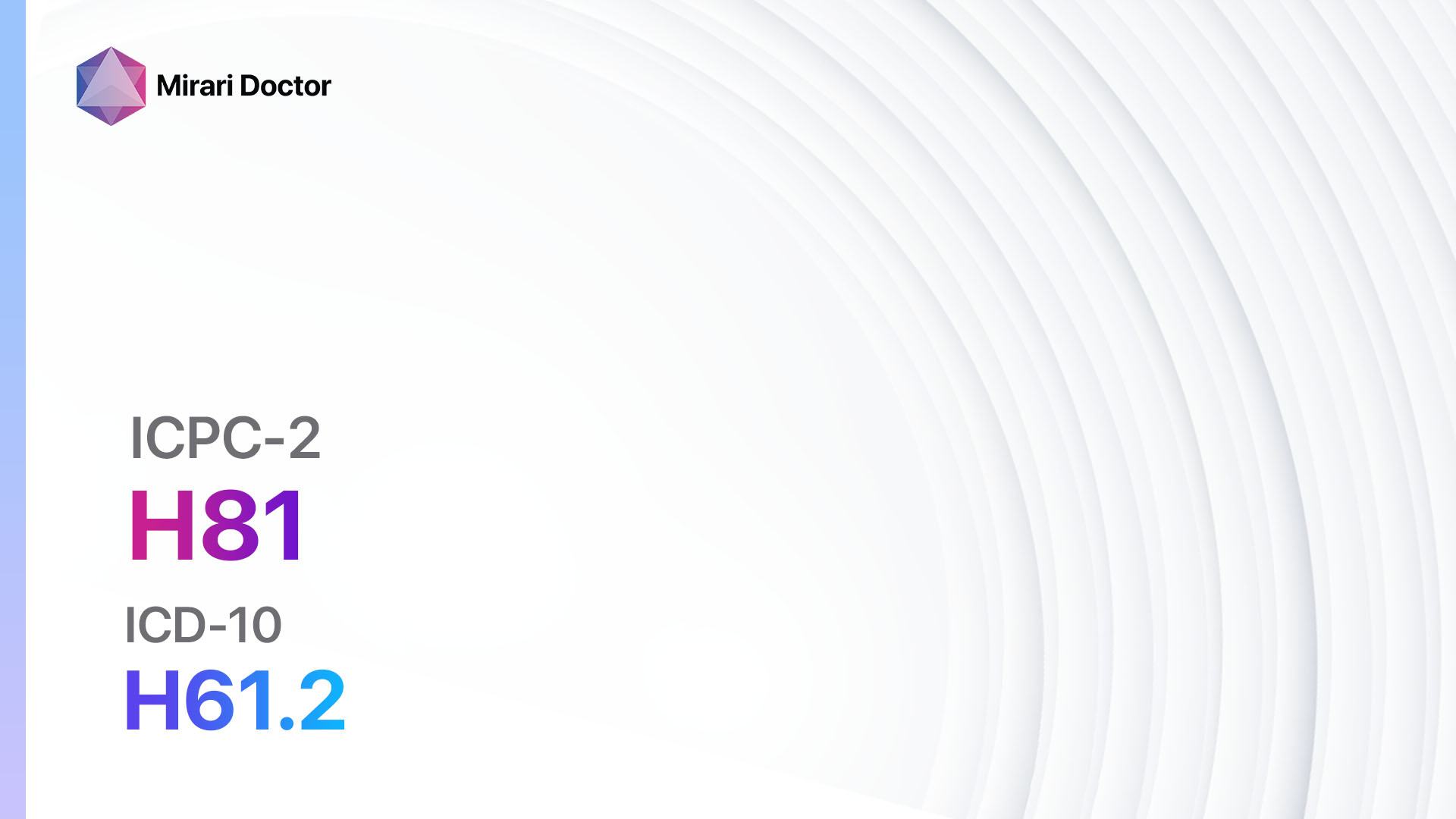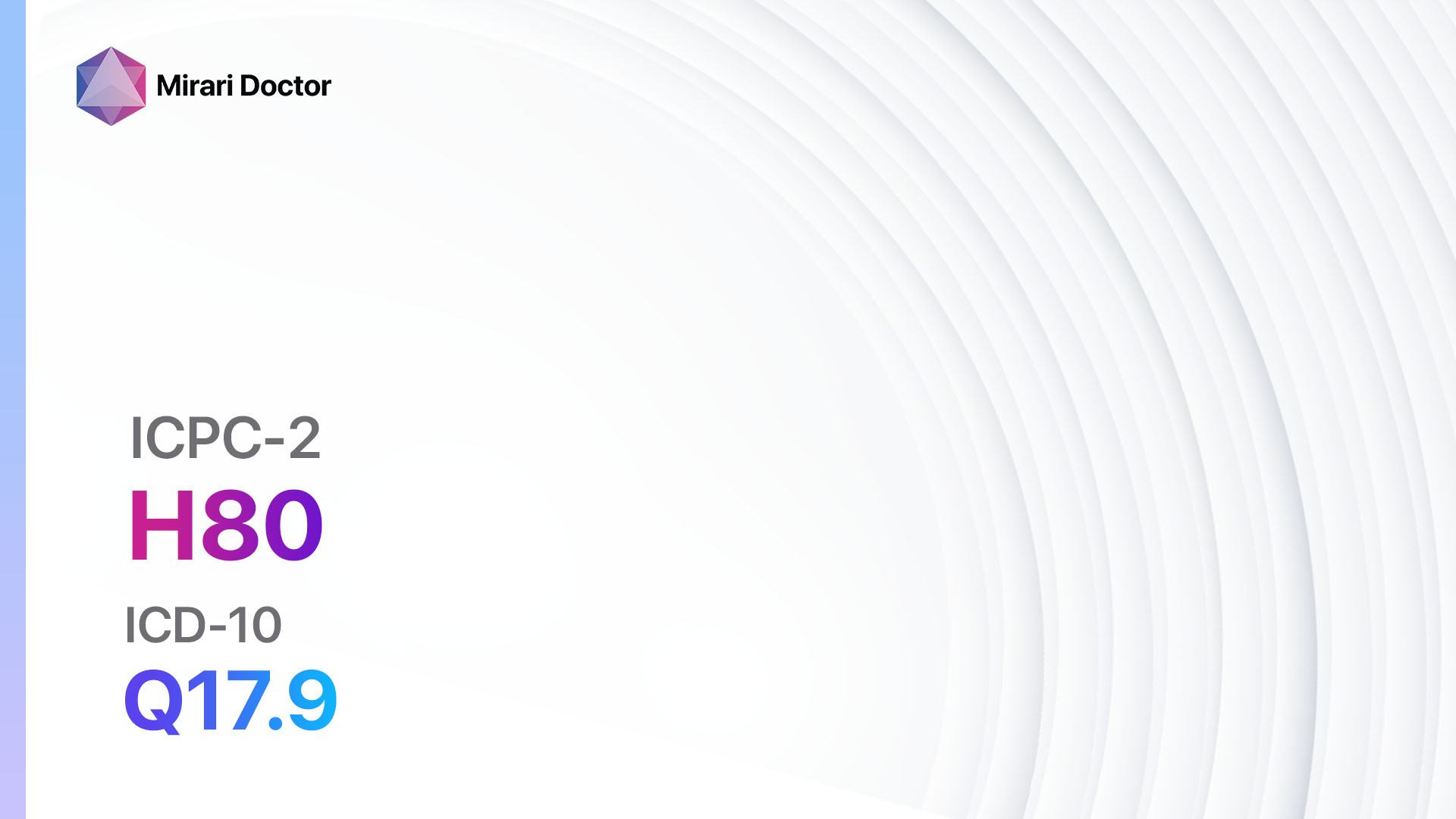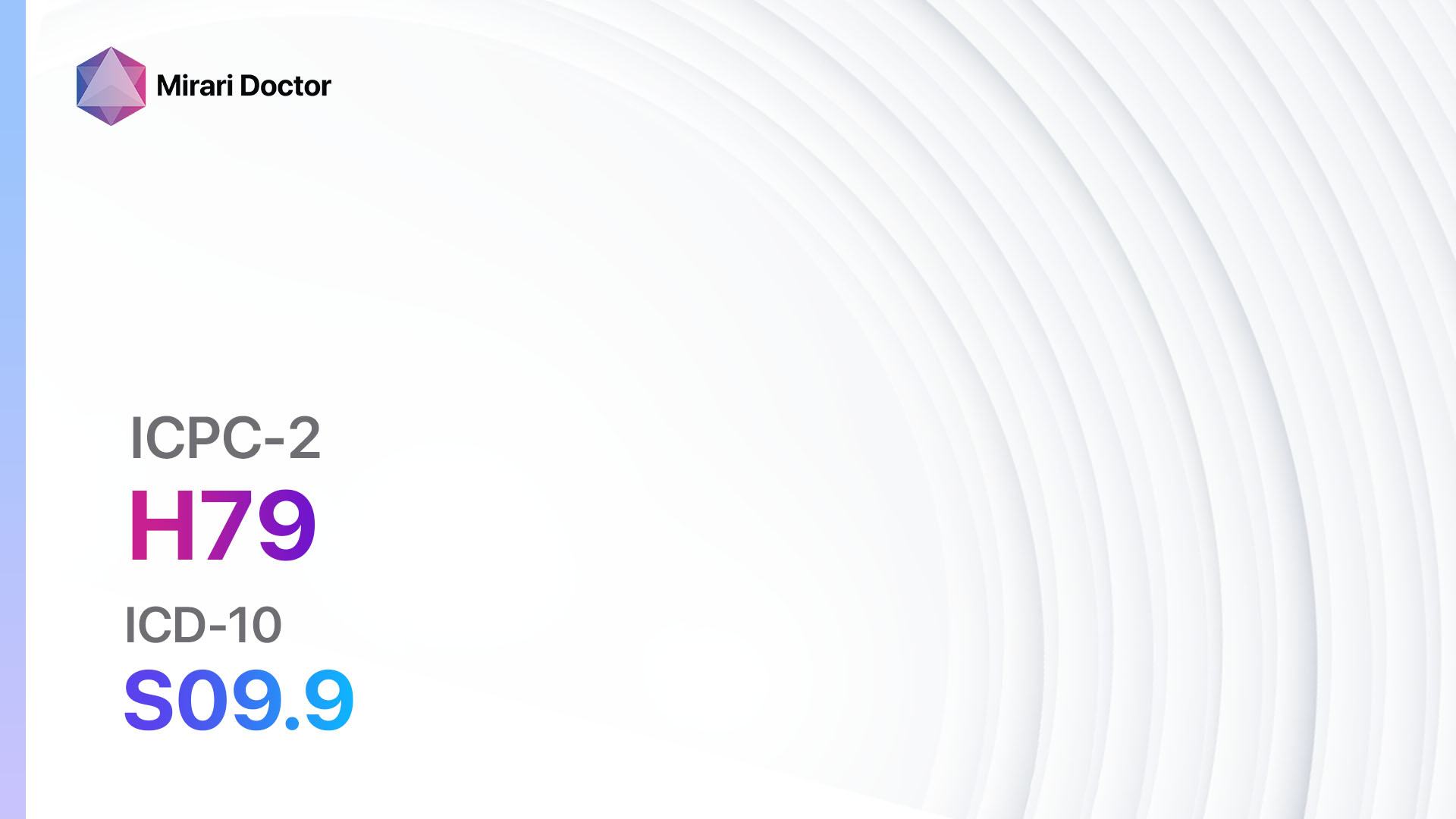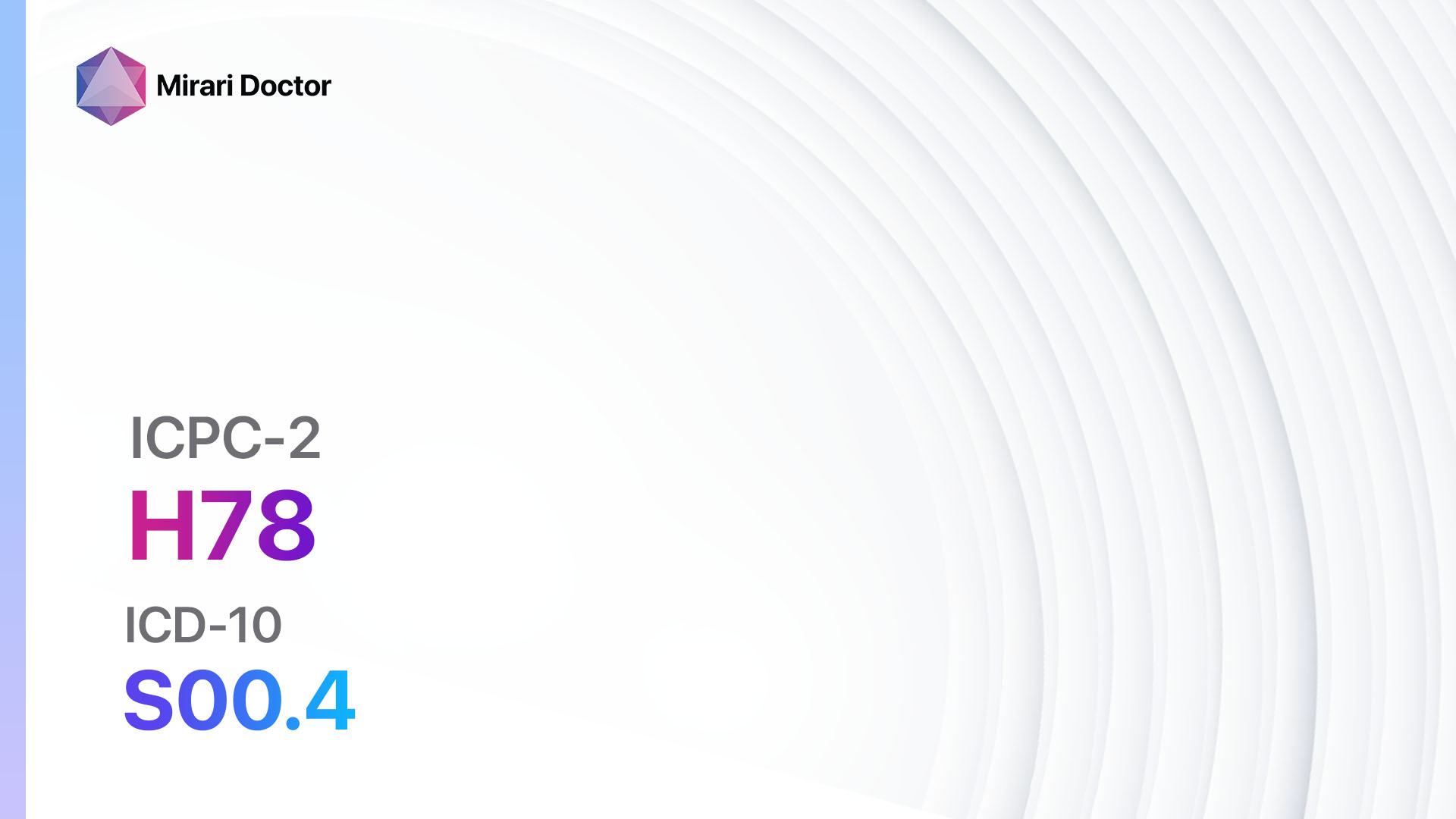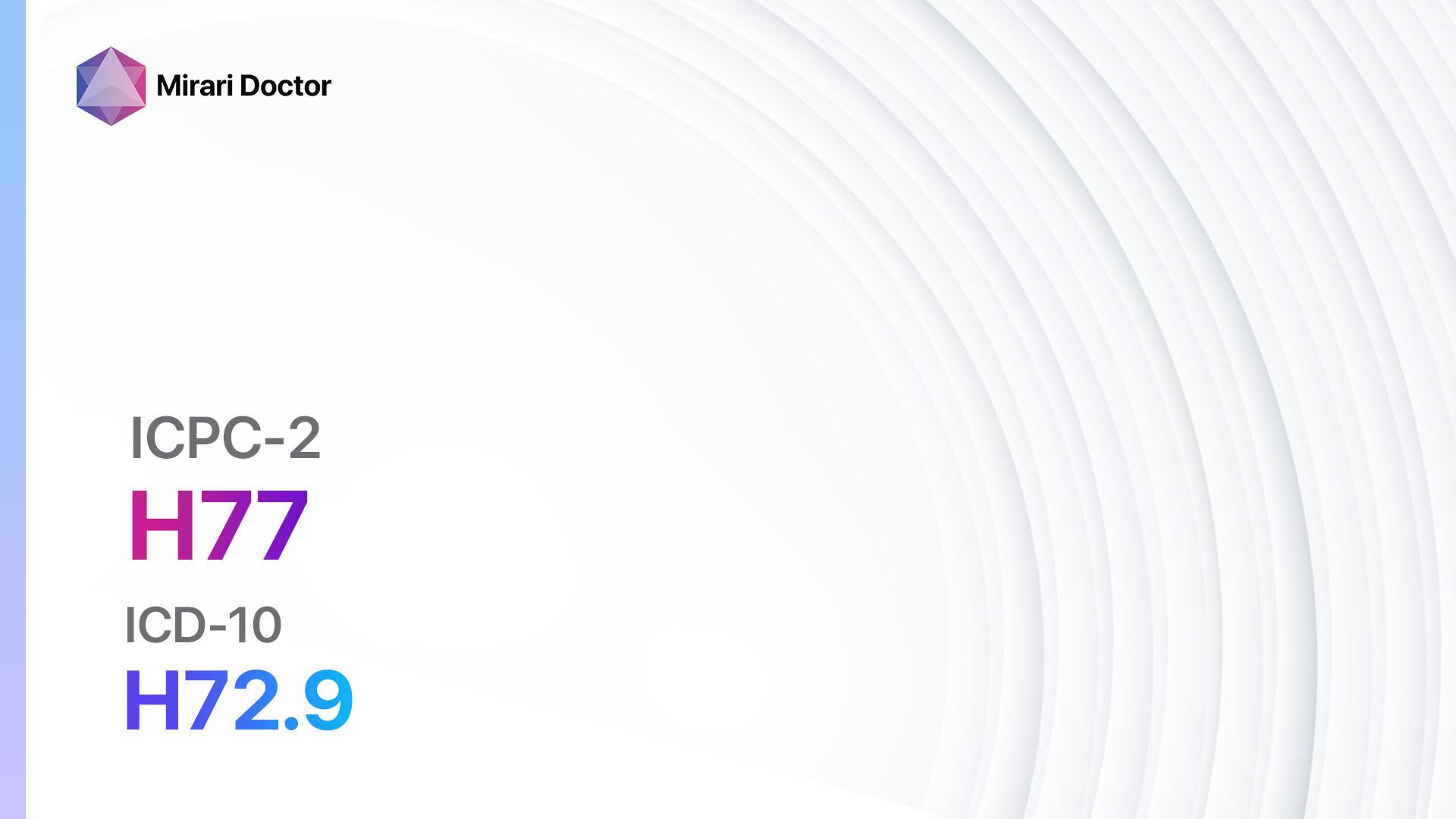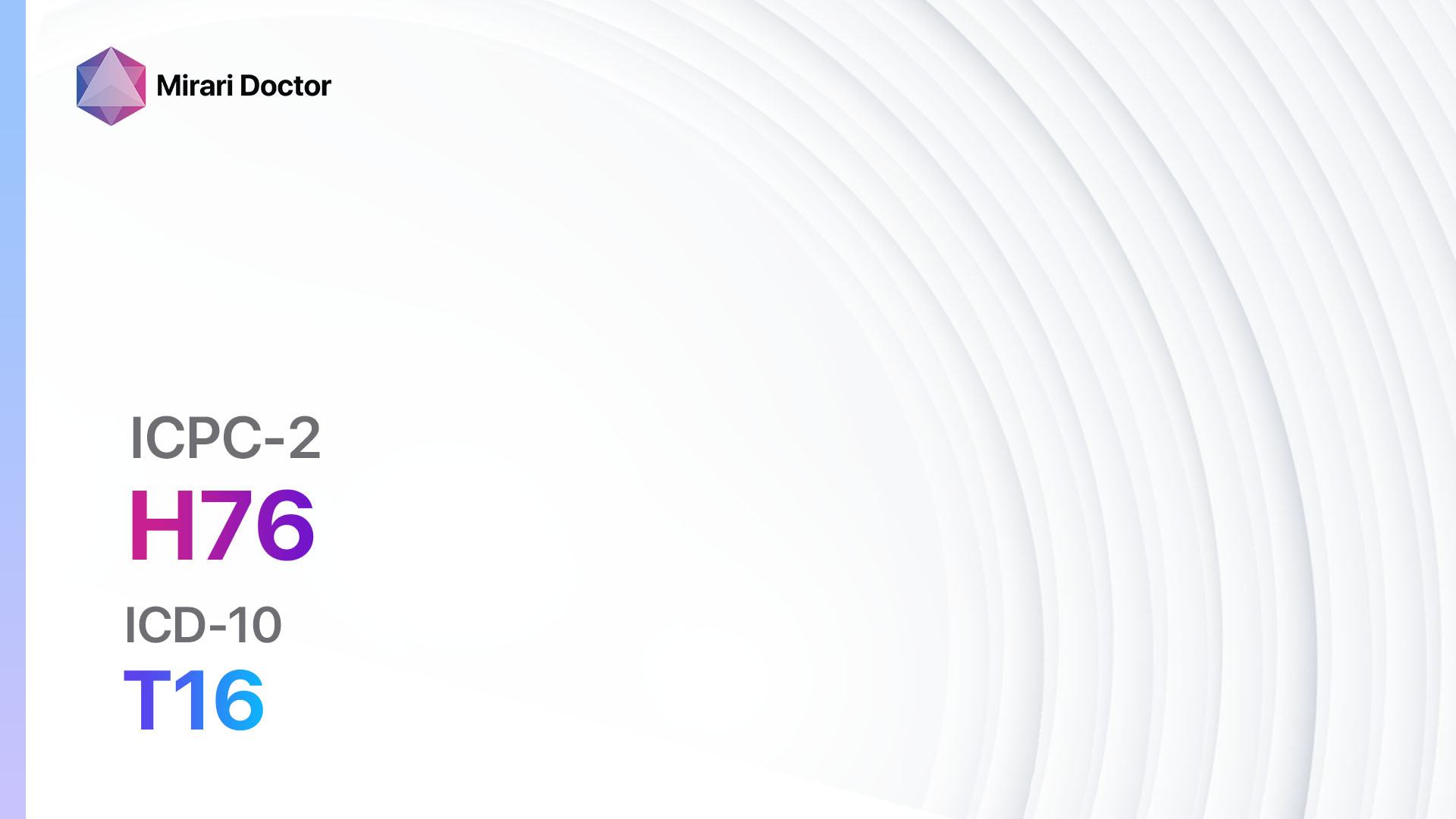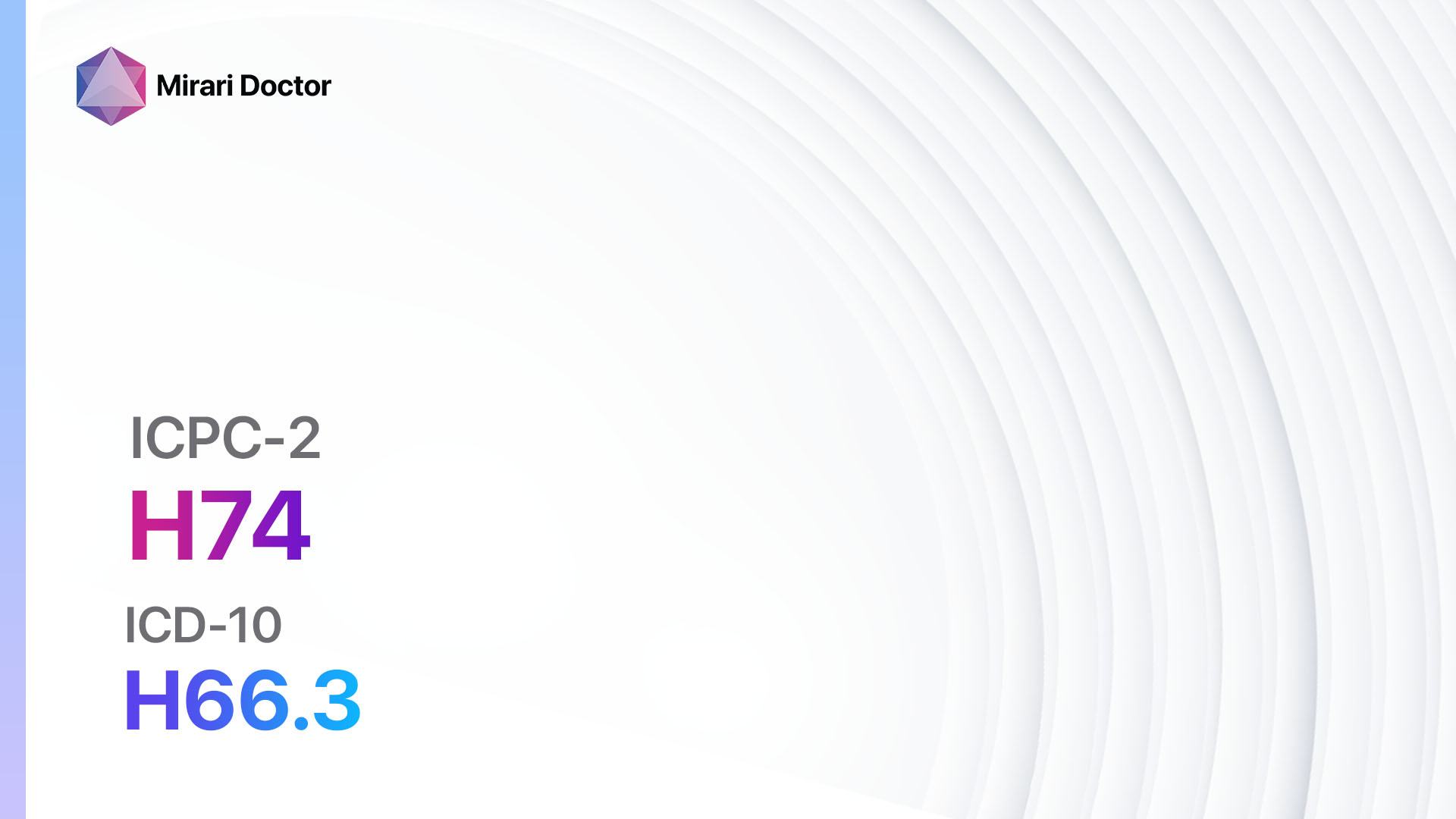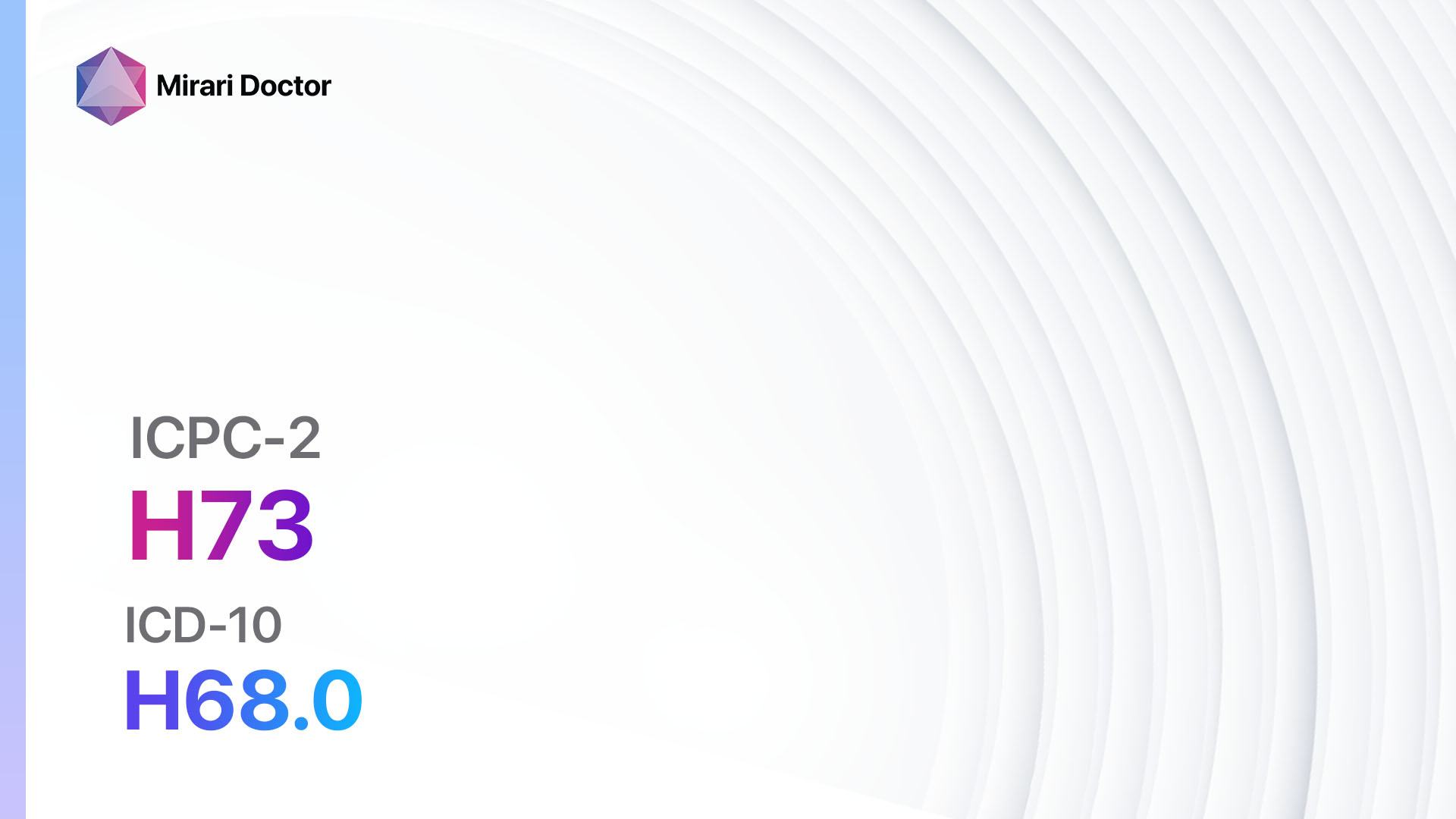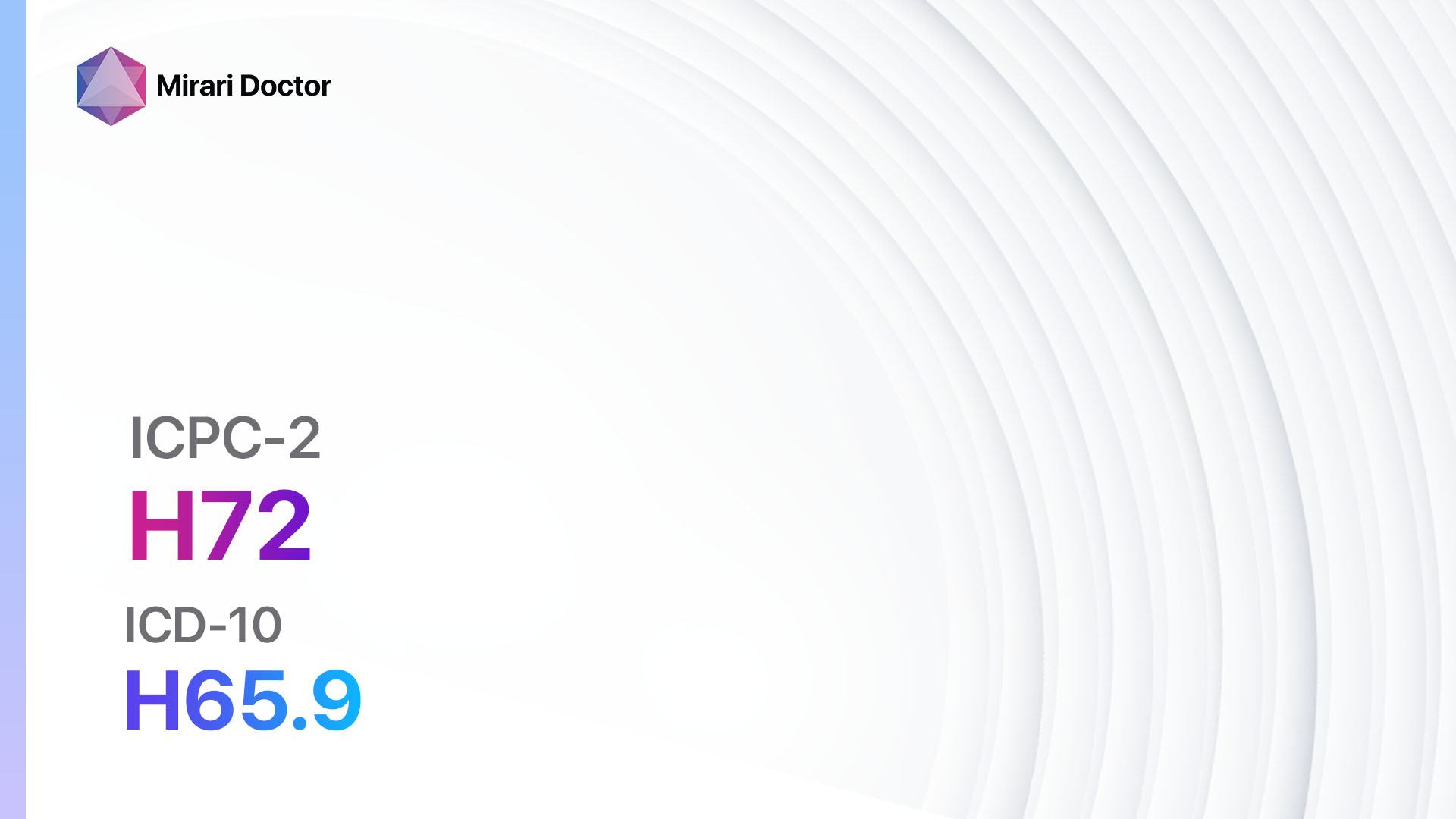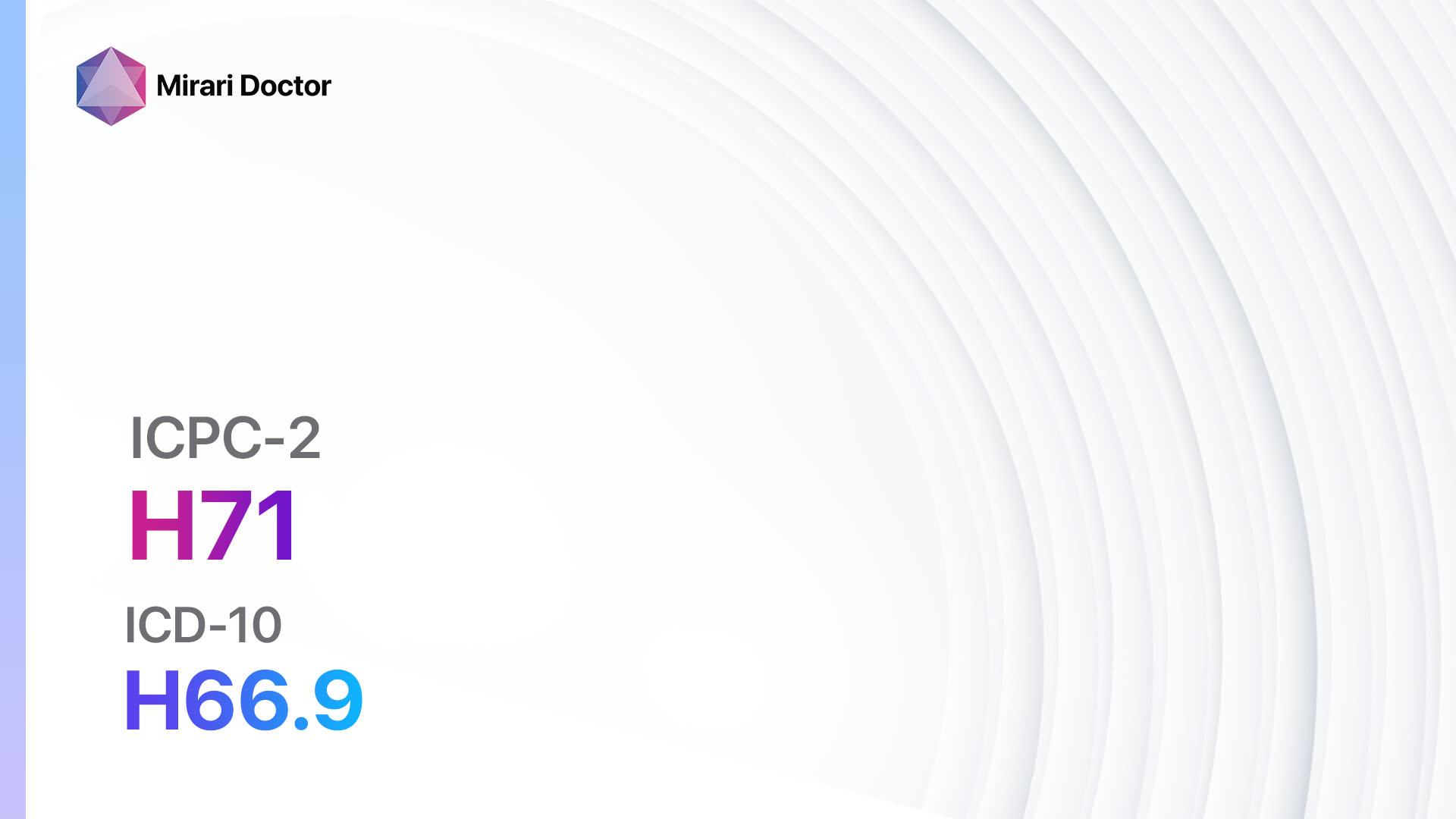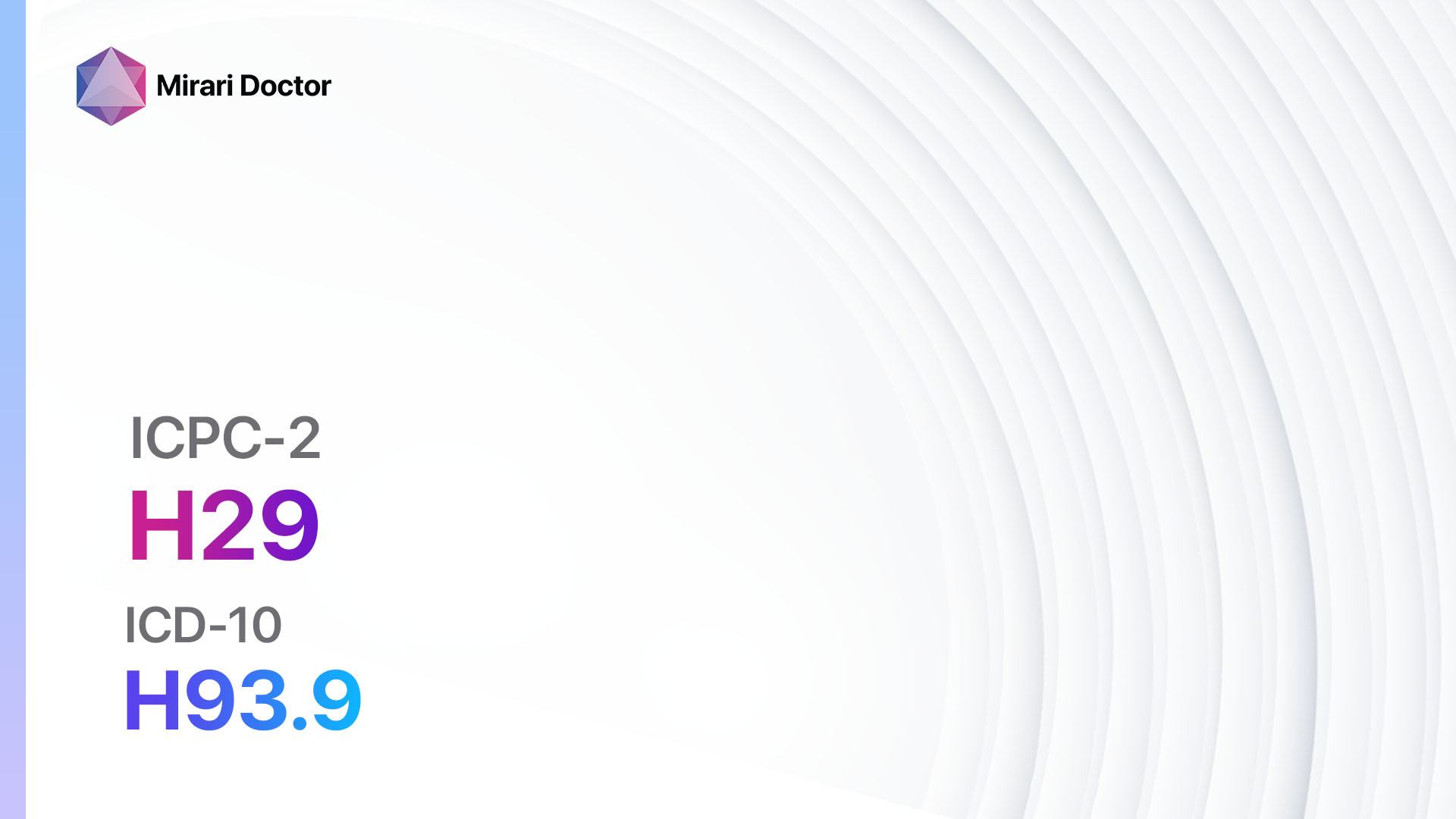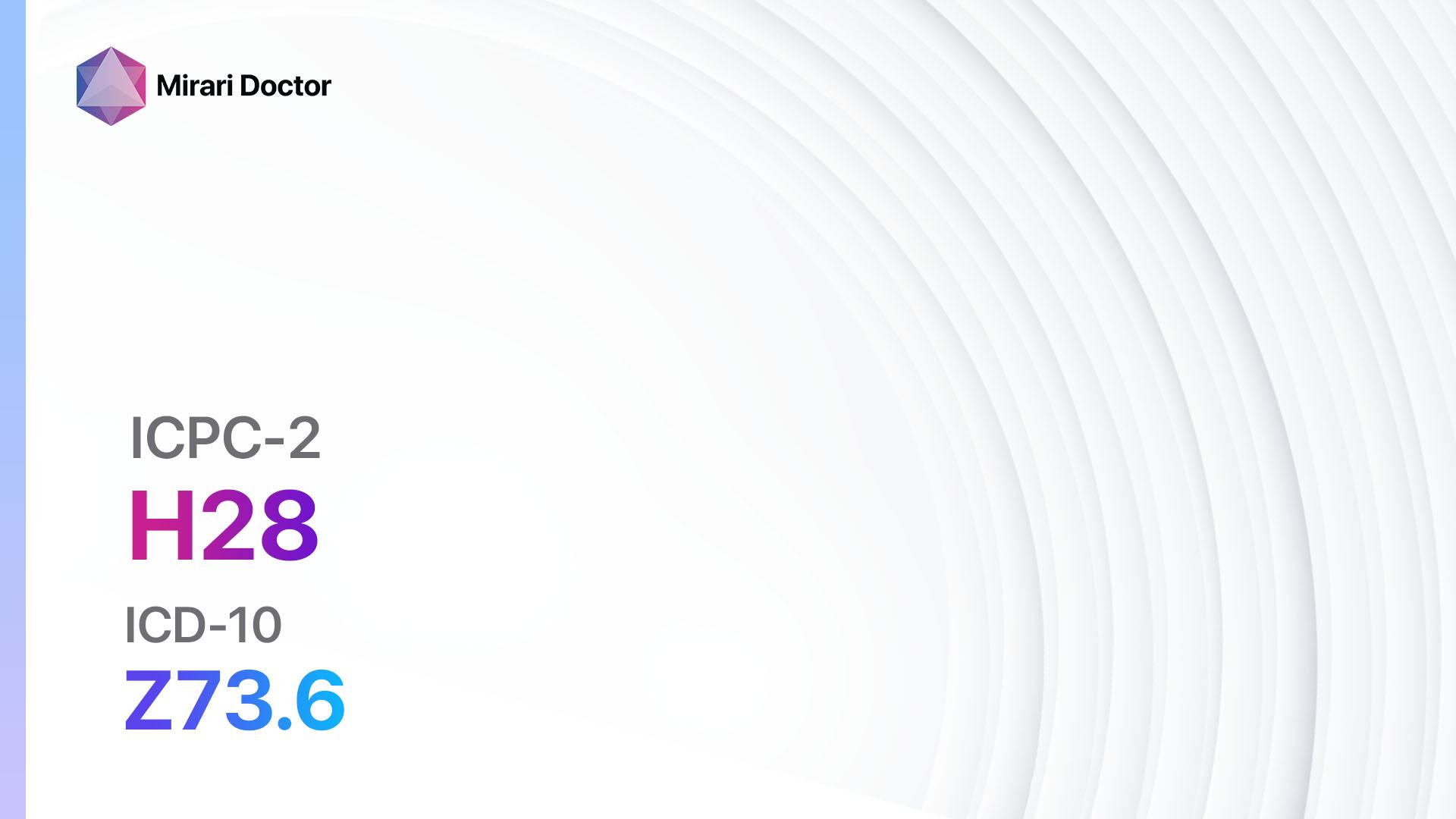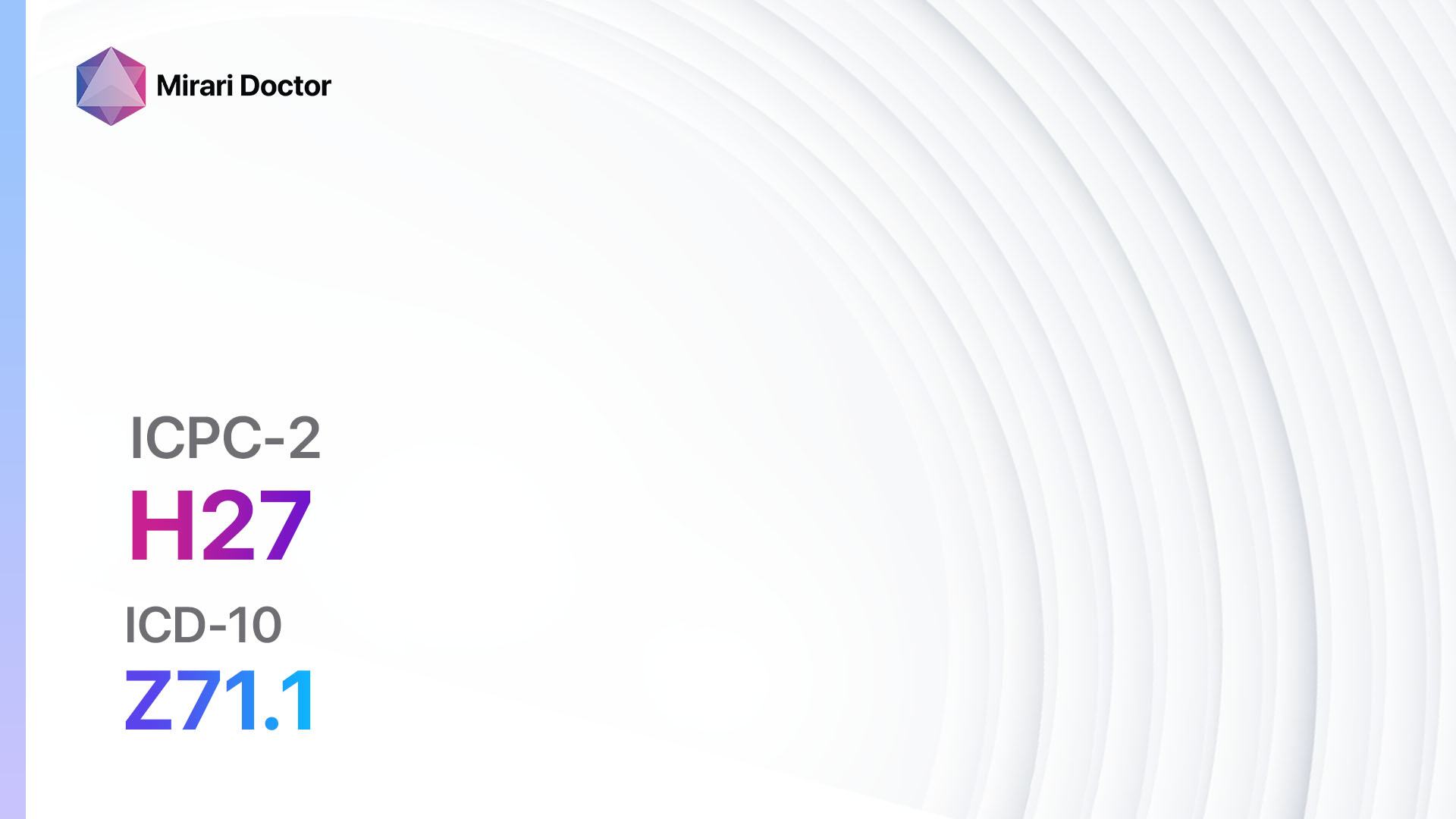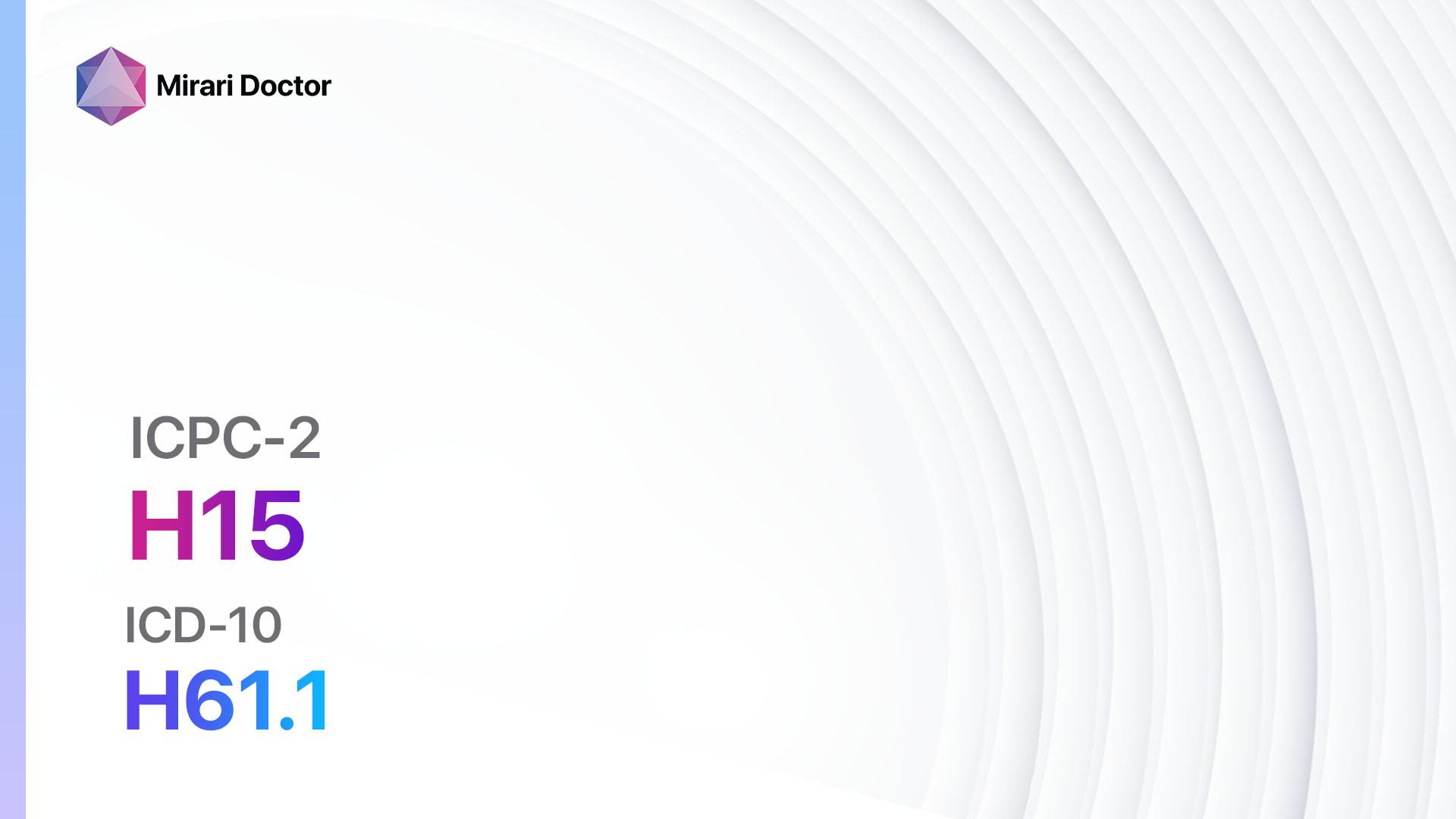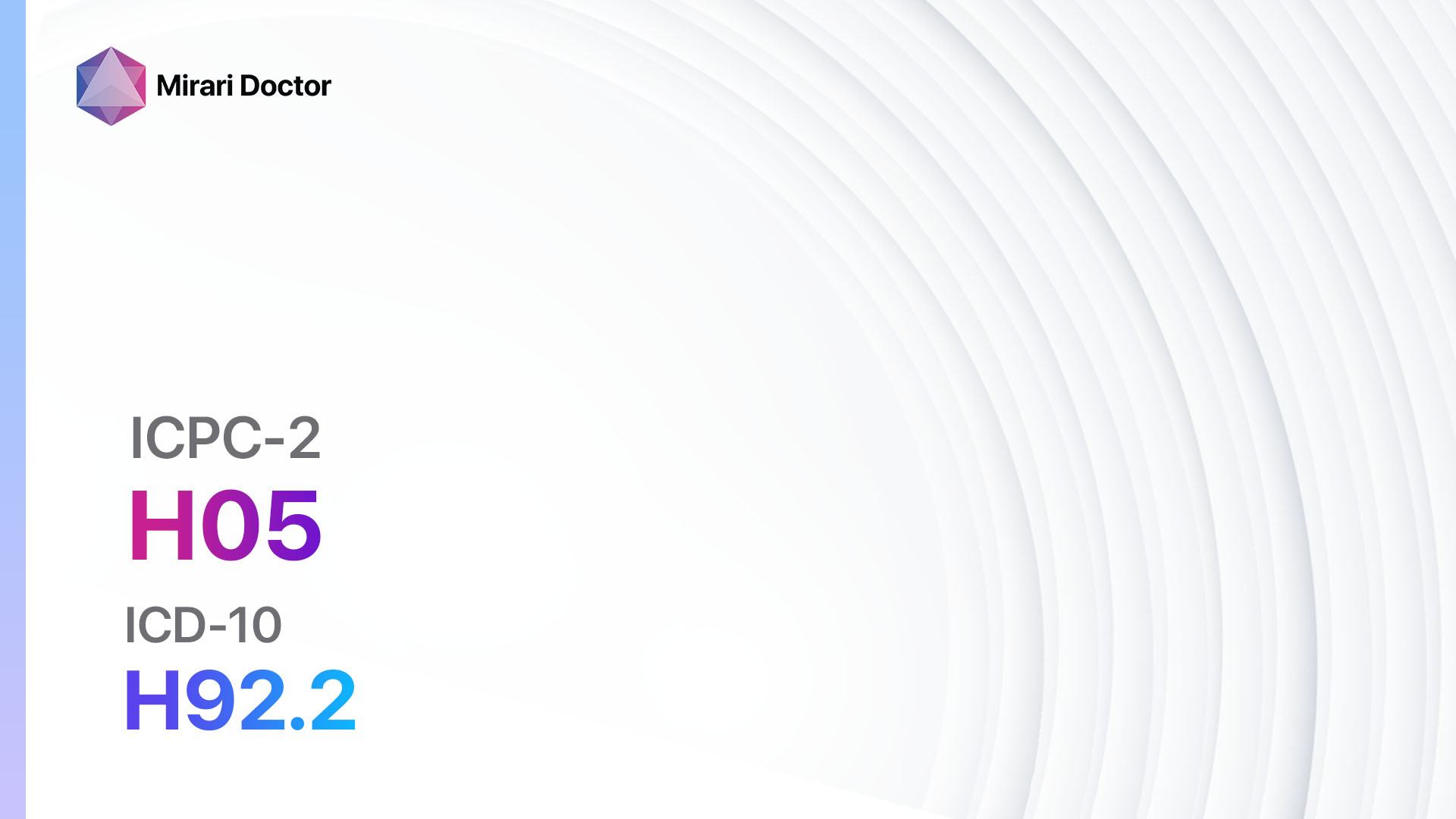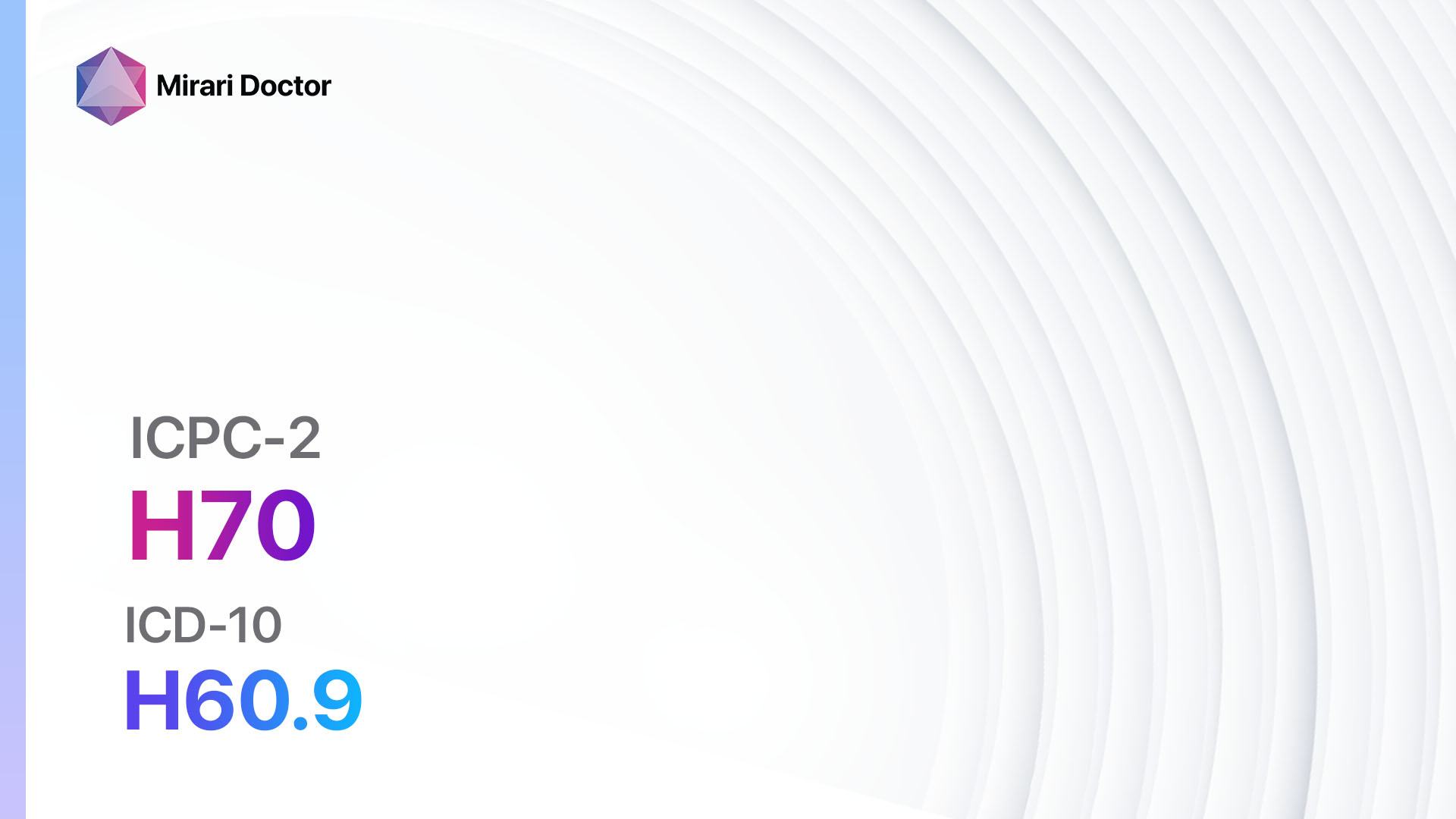
Introduction
Otitis externa, also known as swimmer’s ear, is an infection or inflammation of the ear canal, which is the passage that connects the outer ear to the eardrum. It is a common condition that can cause pain, itching, and swelling[1]. The aim of this guide is to provide a comprehensive overview of otitis externa, including its symptoms, causes, diagnostic steps, possible interventions, and patient education.
Codes
Symptoms
- Ear pain: The most common symptom of otitis externa is ear pain, which can range from mild to severe[2].
- Itching: Itching inside the ear canal is another common symptom[3].
- Redness and swelling: The skin of the ear canal may appear red and swollen[4].
- Discharge: Otitis externa can cause a yellowish or greenish discharge from the ear[5].
- Decreased hearing: In some cases, otitis externa can lead to temporary hearing loss[6].
Causes
- Bacterial infection: Otitis externa is often caused by a bacterial infection, most commonly by the bacteria Pseudomonas aeruginosa[7].
- Fungal infection: In some cases, otitis externa can be caused by a fungal infection, such as an overgrowth of Candida or Aspergillus[8].
- Irritation or injury: Scratching the ear canal with a cotton swab or other objects can irritate the skin and increase the risk of infection[9].
- Moisture: Excessive moisture in the ear canal, such as from swimming or humid environments, can create a favorable environment for bacterial or fungal growth[10].
Diagnostic Steps
Medical History
- Gather information about the patient’s symptoms, including the duration and severity of ear pain, itching, and discharge.
- Ask about any recent activities that may have contributed to the development of otitis externa, such as swimming or exposure to humid environments.
- Inquire about any previous episodes of otitis externa or other ear infections.
- Assess for any underlying medical conditions or risk factors that may increase the likelihood of developing otitis externa, such as diabetes or a weakened immune system.
Physical Examination
- Inspect the outer ear and ear canal for redness, swelling, discharge, or other signs of infection.
- Gently palpate the area around the ear to check for tenderness or pain.
- Use an otoscope to examine the ear canal and eardrum for signs of inflammation or infection.
- Assess the patient’s hearing using a tuning fork or other appropriate tests.
Laboratory Tests
- Microscopic examination of ear discharge: A sample of ear discharge may be collected and examined under a microscope to identify the presence of bacteria, fungi, or other microorganisms.
- Culture and sensitivity testing: If the initial examination suggests a bacterial or fungal infection, a sample of ear discharge may be sent to a laboratory for culture and sensitivity testing to determine the specific organism causing the infection and the most effective treatment.
Diagnostic Imaging
- Usually, diagnostic imaging is not necessary for the diagnosis of otitis externa. However, in severe cases or when complications are suspected, imaging modalities such as CT scans or MRIs may be used to assess the extent of the infection or to rule out other conditions.
Other Tests
- In some cases, a swab of the ear canal may be taken to test for allergies or to rule out other possible causes of ear symptoms.
- If there is suspicion of a foreign object in the ear canal, an examination with an otoscope or other specialized instruments may be performed to locate and remove the object.
Follow-up and Patient Education
- Advise the patient on proper ear hygiene, including avoiding the use of cotton swabs or other objects to clean the ear canal.
- Instruct the patient to keep the ear dry, especially during swimming or bathing, by using earplugs or a shower cap.
- Prescribe appropriate medications and provide instructions on their use, including dosage, frequency, and duration of treatment.
- Schedule a follow-up appointment to monitor the patient’s progress and ensure the infection is resolving.
Possible Interventions
Traditional Interventions
Medications:
Top 5 drugs for Otitis externa:
- Acetic acid solution (2%):
- Cost: $10-$20 for a 15 mL bottle.
- Contraindications: Hypersensitivity to acetic acid.
- Side effects: Mild stinging or burning sensation.
- Severe side effects: None reported.
- Drug interactions: None reported.
- Warning: Do not use if the eardrum is perforated or if there is a known allergy to acetic acid.
- Antibiotic ear drops (e.g., Neomycin, Polymyxin B, Hydrocortisone):
- Cost: $10-$30 for a 10 mL bottle.
- Contraindications: Hypersensitivity to neomycin, polymyxin B, or hydrocortisone.
- Side effects: Mild stinging or burning sensation, itching.
- Severe side effects: Allergic reactions, hearing loss (rare).
- Drug interactions: None reported.
- Warning: Do not use if the eardrum is perforated or if there is a known allergy to any of the ingredients.
- Oral antibiotics (e.g., Ciprofloxacin, Amoxicillin-Clavulanate):
- Cost: $10-$50 for a course of treatment.
- Contraindications: Hypersensitivity to ciprofloxacin, amoxicillin, or clavulanate.
- Side effects: Nausea, diarrhea, rash.
- Severe side effects: Severe allergic reactions, tendon rupture (rare).
- Drug interactions: Antacids, iron supplements, warfarin.
- Warning: Take with food to reduce the risk of gastrointestinal side effects.
- Pain relievers (e.g., Acetaminophen, Ibuprofen):
- Cost: $5-$15 for a bottle of 100 tablets.
- Contraindications: Hypersensitivity to acetaminophen or ibuprofen, history of gastrointestinal bleeding.
- Side effects: Upset stomach, dizziness.
- Severe side effects: Liver damage (with acetaminophen), gastrointestinal bleeding (with ibuprofen).
- Drug interactions: Warfarin, aspirin, other nonsteroidal anti-inflammatory drugs (NSAIDs).
- Warning: Follow the recommended dosage and do not exceed the maximum daily dose.
- Antifungal ear drops (e.g., Clotrimazole, Miconazole):
- Cost: $10-$30 for a 10 mL bottle.
- Contraindications: Hypersensitivity to clotrimazole, miconazole, or any other ingredients.
- Side effects: Mild stinging or burning sensation, itching.
- Severe side effects: Allergic reactions.
- Drug interactions: None reported.
- Warning: Do not use if the eardrum is perforated or if there is a known allergy to any of the ingredients.
Alternative Drugs:
- Corticosteroid ear drops (e.g., Ciprofloxacin-Dexamethasone): Used for severe inflammation or when there is a risk of complications. Cost: $20-$40 for a 10 mL bottle.
- Oral antifungal medications (e.g., Fluconazole, Itraconazole): Used for fungal infections that do not respond to topical treatment. Cost: $20-$100 for a course of treatment.
- Pain-relieving ear drops (e.g., Benzocaine, Lidocaine): Provide temporary relief from ear pain. Cost: $10-$20 for a 15 mL bottle.
- Oral antihistamines (e.g., Loratadine, Cetirizine): Used for allergic otitis externa. Cost: $5-$20 for a bottle of 30 tablets.
- Ear drying solution (e.g., Isopropyl alcohol, Acetic acid): Used to prevent recurrent infections by promoting ear canal drying. Cost: $10-$20 for a 15 mL bottle.
Surgical Procedures:
- In severe cases of otitis externa that do not respond to medical treatment, surgical intervention may be necessary. This may involve cleaning the ear canal under anesthesia or, in rare cases, surgical repair of a perforated eardrum. The cost of surgical procedures can vary widely depending on the specific procedure and the location, ranging from $1,000 to $10,000 or more.
Alternative Interventions
- Warm compresses: Applying a warm compress to the affected ear can help relieve pain and reduce inflammation. Cost: Free.
- Ear drops with natural ingredients (e.g., Tea tree oil, Garlic oil): Some individuals find relief from otitis externa symptoms by using ear drops containing natural ingredients. Cost: $10-$20 for a 15 mL bottle.
- Homeopathic remedies (e.g., Pulsatilla, Silicea): Homeopathic remedies may be used as an alternative treatment for otitis externa. Cost: $10-$20 for a bottle of pellets.
- Probiotics: Some studies suggest that probiotics may help prevent recurrent ear infections. Cost: $10-$30 for a bottle of probiotic supplements.
- Herbal remedies (e.g., Mullein oil, Calendula oil): Herbal remedies, such as mullein oil or calendula oil, may have anti-inflammatory and antimicrobial properties that can help relieve symptoms of otitis externa. Cost: $10-$20 for a 15 mL bottle.
Lifestyle Interventions
- Avoiding water exposure: Minimize exposure to water in the ear canal by using earplugs or a shower cap while bathing or swimming. Cost: Varies.
- Keeping the ear dry: After water exposure, use a towel or a hairdryer on a low setting to gently dry the outer ear. Cost: Free.
- Avoiding irritants: Avoid using cotton swabs or other objects to clean the ear canal, as this can irritate the skin and increase the risk of infection. Cost: Free.
- Wearing ear protection: When engaging in activities that may expose the ears to loud noises or excessive wind, wear ear protection, such as earplugs or earmuffs. Cost: Varies.
- Maintaining good ear hygiene: Clean the outer ear regularly with a washcloth or cotton ball, being careful not to insert anything into the ear canal. Cost: Free.
It is important to note that the cost ranges provided are approximate and may vary depending on the location and availability of the interventions. It is recommended to consult with a healthcare professional for personalized treatment options and cost estimates.
Mirari Cold Plasma Alternative Intervention
Understanding Mirari Cold Plasma
- Safe and Non-Invasive Treatment: Mirari Cold Plasma is a safe and non-invasive treatment option for various skin conditions. It does not require incisions, minimizing the risk of scarring, bleeding, or tissue damage.
- Efficient Extraction of Foreign Bodies: Mirari Cold Plasma facilitates the removal of foreign bodies from the skin by degrading and dissociating organic matter, allowing easier access and extraction.
- Pain Reduction and Comfort: Mirari Cold Plasma has a local analgesic effect, providing pain relief during the treatment, making it more comfortable for the patient.
- Reduced Risk of Infection: Mirari Cold Plasma has antimicrobial properties, effectively killing bacteria and reducing the risk of infection.
- Accelerated Healing and Minimal Scarring: Mirari Cold Plasma stimulates wound healing and tissue regeneration, reducing healing time and minimizing the formation of scars.
Mirari Cold Plasma Prescription
Video instructions for using Mirari Cold Plasma Device – H70 Otitis externa (ICD-10:H60.9)
| Mild | Moderate | Severe |
| Mode setting: 1 (Infection) Location: 0 (Localized) Morning: 15 minutes, Evening: 15 minutes | Mode setting: 1 (Infection) Location: 0 (Localized) Morning: 30 minutes, Lunch: 30 minutes, Evening: 30 minutes | Mode setting: 1 (Infection) Location: 0 (Localized) Morning: 30 minutes, Lunch: 30 minutes, Evening: 30 minutes |
| Mode setting: 2 (Wound Healing) Location: 0 (Localized) Morning: 15 minutes, Evening: 15 minutes | Mode setting: 2 (Wound Healing) Location: 0 (Localized) Morning: 30 minutes, Lunch: 30 minutes, Evening: 30 minutes | Mode setting: 2 (Wound Healing) Location: 0 (Localized) Morning: 30 minutes, Lunch: 30 minutes, Evening: 30 minutes |
| Mode setting: 3 (Antiviral Therapy) Location: 0 (Localized) Morning: 15 minutes, Evening: 15 minutes | Mode setting: 3 (Antiviral Therapy) Location: 0 (Localized) Morning: 30 minutes, Lunch: 30 minutes, Evening: 30 minutes | Mode setting: 3 (Antiviral Therapy) Location: 0 (Localized) Morning: 30 minutes, Lunch: 30 minutes, Evening: 30 minutes |
| Total Morning: 45 minutes approx. $7.50 USD, Evening: 45 minutes approx. $7.50 USD | Total Morning: 90 minutes approx. $15 USD, Lunch: 90 minutes approx. $15 USD, Evening: 90 minutes approx. $15 USD, | Total Morning: 90 minutes approx. $15 USD, Lunch: 90 minutes approx. $15 USD, Evening: 90 minutes approx. $15 USD, |
| Usual treatment for 7-60 days approx. $105 USD – $900 USD | Usual treatment for 6-8 weeks approx. $1,890USD – $2,520 USD | Usual treatment for 3-6 months approx. $4,050 USD – $8,100 USD |
 |
|
Use the Mirari Cold Plasma device to treat Otitis externa effectively.
WARNING: MIRARI COLD PLASMA IS DESIGNED FOR THE HUMAN BODY WITHOUT ANY ARTIFICIAL OR THIRD PARTY PRODUCTS. USE OF OTHER PRODUCTS IN COMBINATION WITH MIRARI COLD PLASMA MAY CAUSE UNPREDICTABLE EFFECTS, HARM OR INJURY. PLEASE CONSULT A MEDICAL PROFESSIONAL BEFORE COMBINING ANY OTHER PRODUCTS WITH USE OF MIRARI.
Step 1: Cleanse the Skin
- Start by cleaning the affected area of the skin with a gentle cleanser or mild soap and water. Gently pat the area dry with a clean towel.
Step 2: Prepare the Mirari Cold Plasma device
- Ensure that the Mirari Cold Plasma device is fully charged or has fresh batteries as per the manufacturer’s instructions. Make sure the device is clean and in good working condition.
- Switch on the Mirari device using the power button or by following the specific instructions provided with the device.
- Some Mirari devices may have adjustable settings for intensity or treatment duration. Follow the manufacturer’s instructions to select the appropriate settings based on your needs and the recommended guidelines.
Step 3: Apply the Device
- Place the Mirari device in direct contact with the affected area of the skin. Gently glide or hold the device over the skin surface, ensuring even coverage of the area experiencing.
- Slowly move the Mirari device in a circular motion or follow a specific pattern as indicated in the user manual. This helps ensure thorough treatment coverage.
Step 4: Monitor and Assess:
- Keep track of your progress and evaluate the effectiveness of the Mirari device in managing your Otitis externa. If you have any concerns or notice any adverse reactions, consult with your health care professional.
Note
This guide is for informational purposes only and should not replace the advice of a medical professional. Always consult with your healthcare provider or a qualified medical professional for personal advice, diagnosis, or treatment. Do not solely rely on the information presented here for decisions about your health. Use of this information is at your own risk. The authors of this guide, nor any associated entities or platforms, are not responsible for any potential adverse effects or outcomes based on the content.
Mirari Cold Plasma System Disclaimer
- Purpose: The Mirari Cold Plasma System is a Class 2 medical device designed for use by trained healthcare professionals. It is registered for use in Thailand and Vietnam. It is not intended for use outside of these locations.
- Informational Use: The content and information provided with the device are for educational and informational purposes only. They are not a substitute for professional medical advice or care.
- Variable Outcomes: While the device is approved for specific uses, individual outcomes can differ. We do not assert or guarantee specific medical outcomes.
- Consultation: Prior to utilizing the device or making decisions based on its content, it is essential to consult with a Certified Mirari Tele-Therapist and your medical healthcare provider regarding specific protocols.
- Liability: By using this device, users are acknowledging and accepting all potential risks. Neither the manufacturer nor the distributor will be held accountable for any adverse reactions, injuries, or damages stemming from its use.
- Geographical Availability: This device has received approval for designated purposes by the Thai and Vietnam FDA. As of now, outside of Thailand and Vietnam, the Mirari Cold Plasma System is not available for purchase or use.
References
- Schaefer, P., & Baugh, R. F. (2012). Acute otitis externa: an update. American family physician, 86(11), 1055–1061.
- Rosenfeld, R. M., Schwartz, S. R., Cannon, C. R., Roland, P. S., Simon, G. R., Kumar, K. A., Huang, W. W., Haskell, H. W., & Robertson, P. J. (2014). Clinical practice guideline: acute otitis externa. Otolaryngology–head and neck surgery : official journal of American Academy of Otolaryngology-Head and Neck Surgery, 150(1 Suppl), S1–S24.
- Kaushik, V., Malik, T., & Saeed, S. R. (2010). Interventions for acute otitis externa. The Cochrane database of systematic reviews, (1), CD004740.
- Mösges, R., Nematian-Samani, M., & Hellmich, M. (2011). A meta-analysis of the efficacy of quinolone containing otics in comparison to antibiotic-steroid combination drugs in the local treatment of otitis externa. Current medical research and opinion, 27(10), 2053–2060.
- Llor, C., McNulty, C., & Butler, C. C. (2014). Ordering and interpreting ear swabs in otitis externa. BMJ (Clinical research ed.), 349, g5259.
- Wipperman, J. (2014). Otitis externa. Primary care, 41(1), 1–9.
- Schaefer, P., & Baugh, R. F. (2012). Acute otitis externa: an update. American family physician, 86(11), 1055–1061.
- Vennewald, I., & Klemm, E. (2010). Otomycosis: Diagnosis and treatment. Clinics in dermatology, 28(2), 202–211.
- Beers, S. L., & Abramo, T. J. (2004). Otitis externa review. Pediatric emergency care, 20(4), 250–256.
- Wang, M. C., Liu, C. Y., Shiao, A. S., & Wang, T. (2005). Ear problems in swimmers. Journal of the Chinese Medical Association : JCMA, 68(8), 347–352.
Related articles
Made in USA


